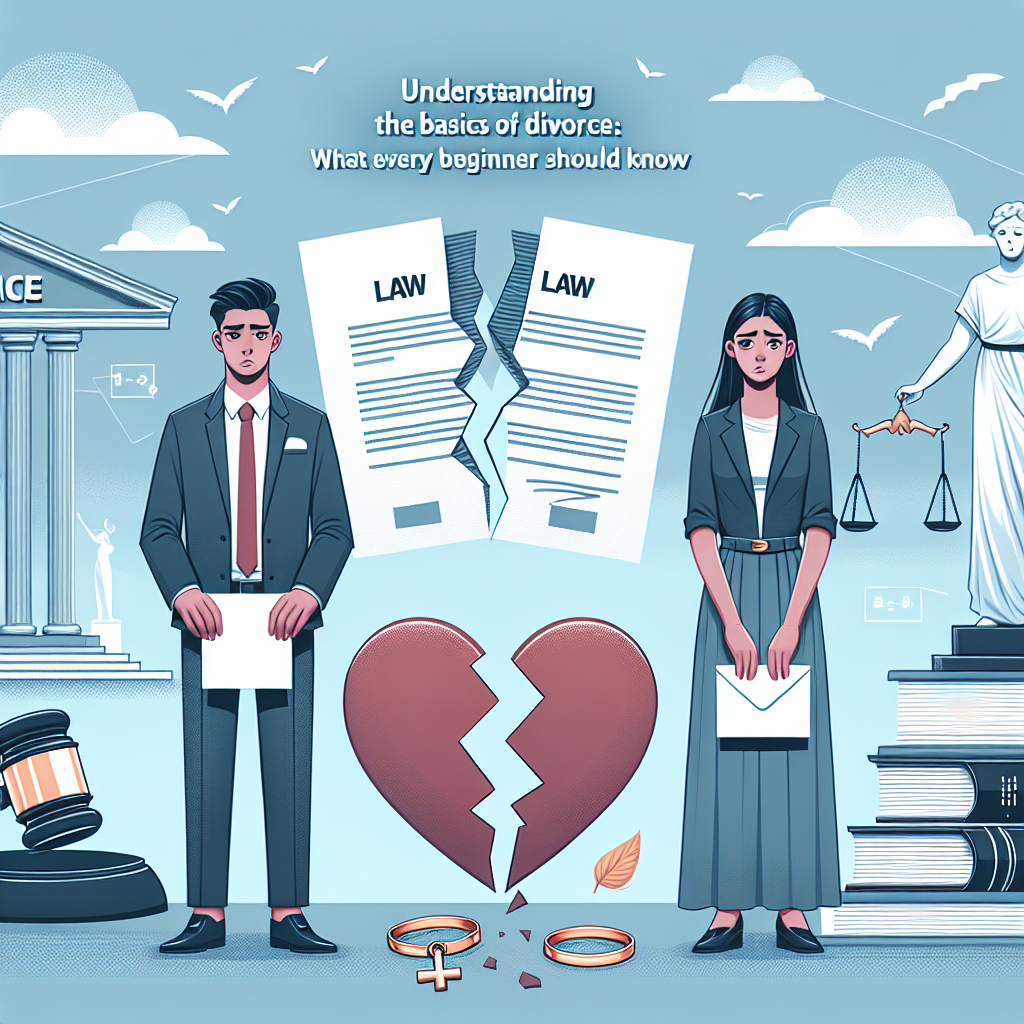Divorce can be a daunting and emotionally charged experience. Whether you are contemplating separation or have already decided to file for divorce, understanding the process is crucial. In this article, we’ll break down the basics of divorce, addressing common questions and concerns that many individuals face. This guide is designed to help you navigate the complexities of divorce with clarity and confidence.
What is Divorce?
Divorce is the legal process of terminating a marital union, which requires the division of assets, liabilities, and, if applicable, child custody arrangements. It can be initiated by one or both partners, and the legal requirements can vary significantly depending on the state or country in which you reside.
Different Types of Divorce
Before diving deeper into the process, it’s essential to understand the different types of divorce:
-
Contested Divorce: This occurs when spouses disagree on one or more issues, such as asset distribution, custody arrangements, or alimony. Contested divorces can be lengthy and costly as they often require court intervention.
-
Uncontested Divorce: In contrast, an uncontested divorce happens when both parties reach mutual agreement on all terms. This type of divorce is generally faster and less expensive, making it an attractive option for many couples.
-
Default Divorce: This happens when one spouse does not respond to divorce papers. The court may grant a divorce to the initiating spouse if the other does not appear in court or respond.
- Mediated Divorce: In mediated divorces, couples work with a neutral third party (a mediator) to negotiate terms amicably. This can help foster communication and lead to a more satisfactory resolution for both parties.
The Divorce Process: A Step-by-Step Guide
The divorce process may seem overwhelming, but breaking it down into steps can simplify things:
-
Deciding to File: The first step is recognizing that the marriage isn’t working. It’s crucial to assess whether reconciliation is possible or if moving forward with divorce is in everyone’s best interest.
-
Consulting Professionals: It’s wise to speak with a divorce attorney or mediator. They can provide legal advice tailored to your specific situation.
-
Filing for Divorce: The next step involves filing a petition for divorce with the court. This document outlines your reasons for divorce and your requests regarding asset division, custody, and support.
-
Serving Divorce Papers: Once filed, the other spouse must be formally served with divorce papers, giving them notice of the legal proceedings.
-
Negotiation and Settlement: Most divorces settle outside of court. Negotiating the terms with the help of an attorney or mediator can lead to a more amicable solution.
- Finalizing the Divorce: If a settlement is reached, or the court rules in your favor, the divorce will be finalized, and a decree will be issued. This document legally ends the marriage.
Financial Considerations in Divorce
One of the most significant challenges in divorce is managing financial implications. Here are some key factors to consider:
-
Asset Division: In most jurisdictions, assets acquired during the marriage are subject to division. Understanding the laws in your state regarding community property vs. equitable distribution is vital.
-
Spousal Support: Alimony may be awarded to one spouse to support the other financially after separation. This can be temporary or permanent, depending on various factors such as length of marriage and financial need.
- Child Support: If children are involved, determining child support payments is essential for their well-being. Guidelines vary by state, focusing on the income of both parents and the child’s needs.
Emotional Impact of Divorce
Divorce is more than just a legal process; it can be emotionally taxing. Here are some ways to cope:
-
Acknowledge Your Feelings: It’s natural to experience a range of emotions—sadness, anger, relief. Allow yourself to feel these emotions without judgment.
-
Reach Out for Support: Surround yourself with friends, family, or support groups. Sharing your experience can alleviate feelings of isolation.
- Consider Professional Help: A therapist or counselor can help you navigate your emotions and provide coping strategies.
Moving Forward: Life After Divorce
While divorce marks the end of a significant chapter, it also opens the door to new beginnings. Take time to reflect on your priorities, set new goals, and invest in your personal growth.
-
Focus on Yourself: Rediscover hobbies, passions, or career aspirations that may have been sidelined during the marriage.
-
Build a Support Network: Connecting with others who have gone through similar experiences can help you heal and regain confidence.
- Prepare for Co-Parenting: If children are involved, focus on establishing a co-parenting plan that prioritizes their well-being. Communication and compromise are key.
Conclusion
Understanding the basics of divorce can empower you to approach this life transition with clarity and confidence. While the journey may be challenging, remembering that you are not alone and seeking professional support can make all the difference. Whether you’re navigating emotional turbulence or logistical complexities, take it one step at a time. With patience and resilience, a new, fulfilling chapter awaits.
If you’re facing divorce or simply want to learn more, don’t hesitate to seek out local resources and professional assistance tailored to your unique situation. A brighter future is possible, and taking informed steps toward healing is a vital first move.


